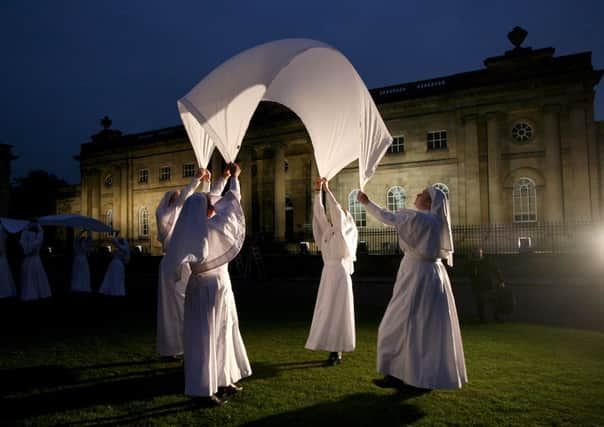Arts funding goes south as London-centric bias revealed


Everyone who works in the region’s theatres, galleries and museums knows that when it comes to funding London gets more than its fair share of the pot.
Few, however, realised the extent of the bias. But now thanks to an independent report, which had theatre directors, playwrights and actors outside London choking on their breakfast when it was published yesterday morning, the lid has been well and truly lifted.
Advertisement
Hide AdAdvertisement
Hide AdThe headline figures show that in London £70 is invested in the arts per head of population. Compare that with the rest of the country where the share of Arts Council funding amounts to just £4.50 per head.
“We have to be wary of a knee-jerk reaction which says it’s just further evidence of a North-South divide,” says Marcus Romer, artistic director of York-based Pilot Theatre company. “Funding is always going to be weighted towards London because that’s where a large number of national institutions are based. We also have to remember that a lot of the work produced in the capital does eventually tour the rest of the country. However, arts funding has to be fairly distributed and at the moment it doesn’t seem that’s the case.”
Romer, along with Leeds-based Slung Low and York Theatre Royal, recently staged the ambitious outdoor production Blood and Chocolate. For 18 nights a cast of 200 took over the streets of York in a show about the realities of war. It was moving, visually stunning and without a generous slice of funding, it would never have happened.
“We invested £250,000 in that production and we made between £70,000 and £80,000, but theatre can’t just be judged on commercial criteria alone,” says Romer. “We were embedded in York for 12 months, we carried a large community cast along with us and I honestly believe the result was transformative.
Advertisement
Hide AdAdvertisement
Hide Ad“The arts have to be accessible, so while it’s great that a big hit like War Horse tours up here, if restricted view tickets are £40 a night it will inevitably exclude a large number of people. For a show which would never have happened without the luxury of a subsidised development phase that doesn’t seem quite right.”
When the Arts Council announced its last tranche of funding in 2011 a number of Yorkshire companies were left wondering how they would balance the books. Among them was Leeds-based Red Ladder which saw its funding drop by almost £100,000, a cut of almost 40 per cent.
“It’s galling, but sadly not surprising,” says Red Ladder producer Chris Lloyd. “The funding system must surely work on economies of scale. Large theatres will always have the potential for greater income simply because of the amount of people they can get through the door. Small theatres just don’t have that option.
“If just one or two per cent could be sliced off their budgets and distributed among smaller companies, the difference it would make would be huge.”
Advertisement
Hide AdAdvertisement
Hide AdArts organisations will make their next bids for funding in the New Year and given the fall-out from the Rebalancing Our Cultural Capital report its decisions are likely to come under more scrutiny than ever before.
“Inequality of opportunity provokes outrage when it is in education or health care, so how can it be acceptable for it to exist in the arts?” says Sheena Wrigley, chief executive of West Yorkshire Playhouse.
“Last month David Cameron said ‘this country has been London-centric for too long’. Now the Government and the Arts Council need to act to make sure the money follows the rhetoric.” It’s a view echoed by Northern Ballet, which along with all other ballet and opera companies saw its Arts Council funding reduced by 15 per cent. It left a £500,000 hole, but a renewed fundraising drive has seen donations almost double to £700,000 a year.
“Initially we feared we might have to scale back what we do, but ultimately it has made us stronger because we are no longer as reliant on a pot of money which could disappear overnight,” says chief executive Mark Skipper.
Advertisement
Hide AdAdvertisement
Hide Ad“However, it hasn’t been easy. A report earlier this year showed that the vast majority of arts philanthropy originates from and stays in London. It’s why we have recently appointed a development director who will be based in London.
“They are due to start in January and I hope that by the end of six months we will start seeing some real results.”
If arts funding refuses to come to Yorkshire, it seems Yorkshire might just have to go to it.